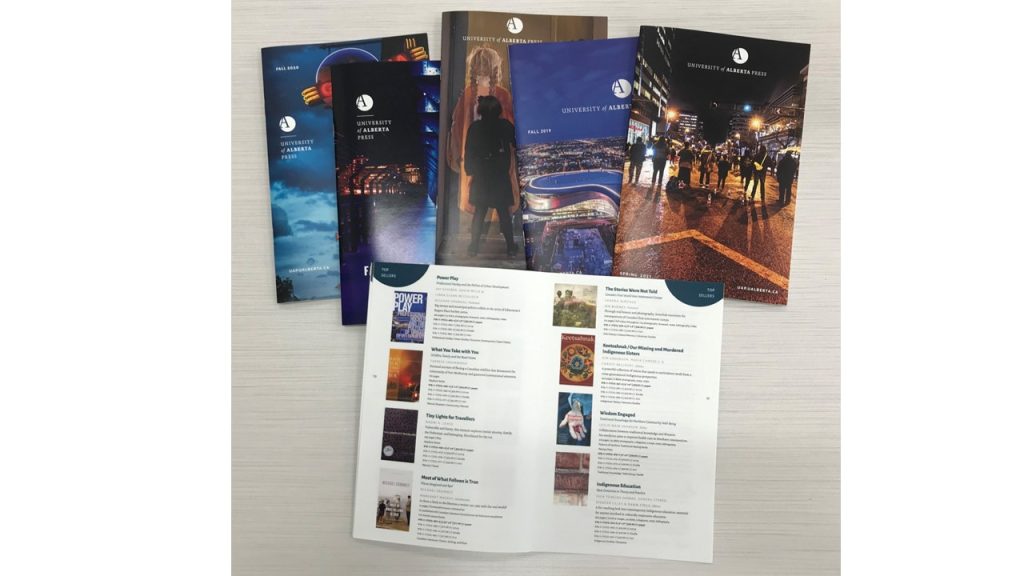Seasonal catalogues! Many publishers, for many years, organized their “lists” of books into seasons, usually Spring and Fall. Sales reps, including our wonderful Ampersand Inc. folk, would take the printed catalogues to bookstore buyers and they would sit together and mark them up to make their orders.
The catalogues included frontlist titles (new books, coming out soon), mid-list (books that were recently published), and bestselling backlist. There might be a publisher’s note or a list of new awards that had been garnered.
Over time, the tradition of printed catalogues has been slowly moving to an online portal, a process that was vastly accelerated by the pandemic. Reps and booksellers view the lists of forthcoming books online through their preferred platform. These include Catalist (BookNet Canada) or Bookmanager here in Canada or Edelweiss in the US.
Benefits for reps include the ability to create curated catalogues for various customers. Booksellers can create an order as they browse. Publishers can update pub dates, prices, and other data as well as include page spreads to showcase design-intensive books such as children’s books or art books. The portals allow booksellers to look at “comparable” books and their sales histories when trying to decide what titles to order and in what quantities.
We used to be able to highlight high-performing older titles to book buyers, which is no longer possible. However, most bookstores have systems that show what does well over time and booksellers use that data as they curate their stores for their particular customers. If only their shelves could hold more books!
Shelf space is clearly not a problem for online behemoths such as Amazon, whose virtual bookshelves hold something like 17 million English-language titles. And that is growing steadily, with anywhere from half a million to four million new books being published each year.
Along with our publishing colleagues, UAlberta Press staff members continue to master new processes and technologies as we bring our authors’ critical, engaging, and informative books into the world.
But we still miss those printed catalogues!

